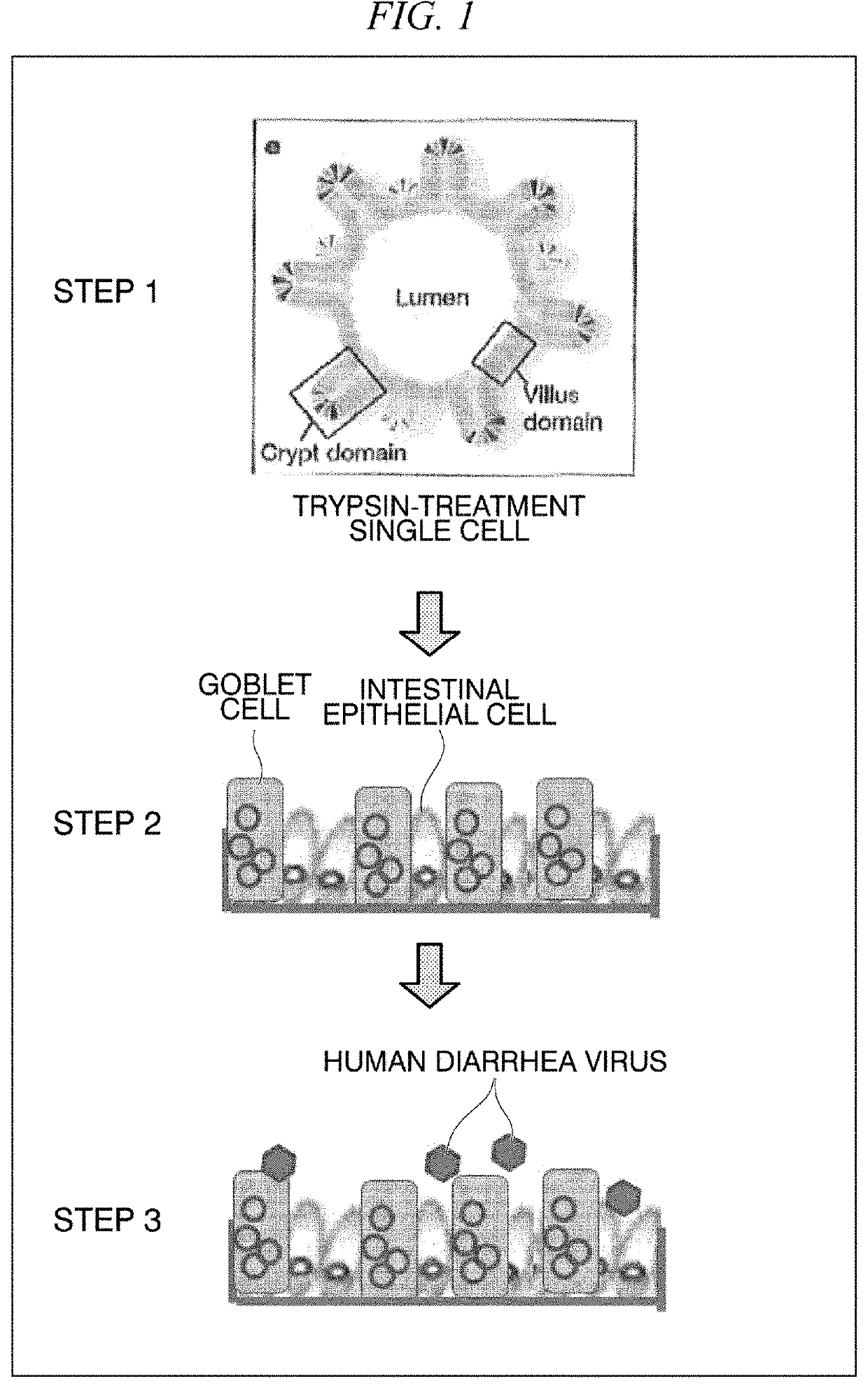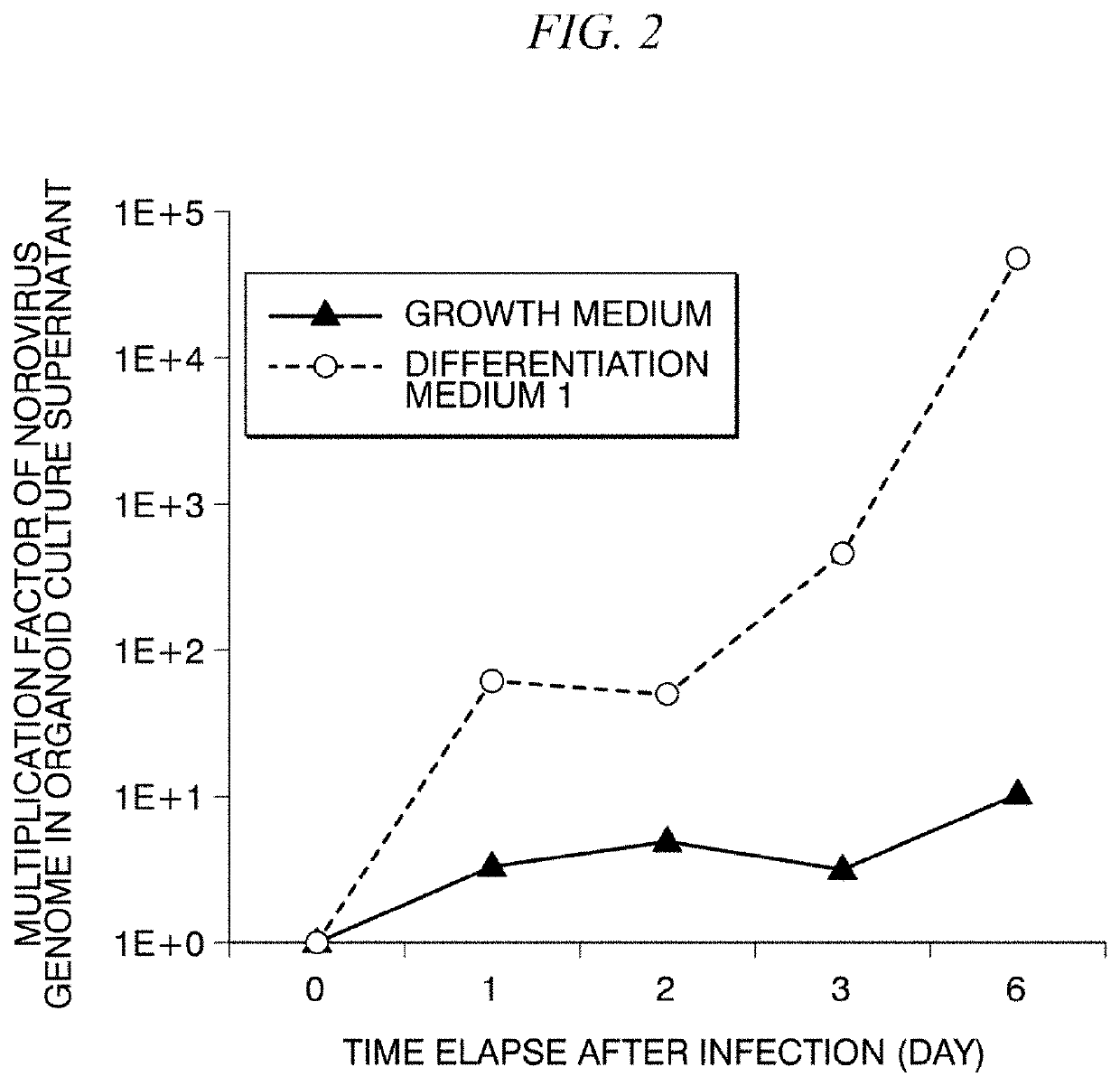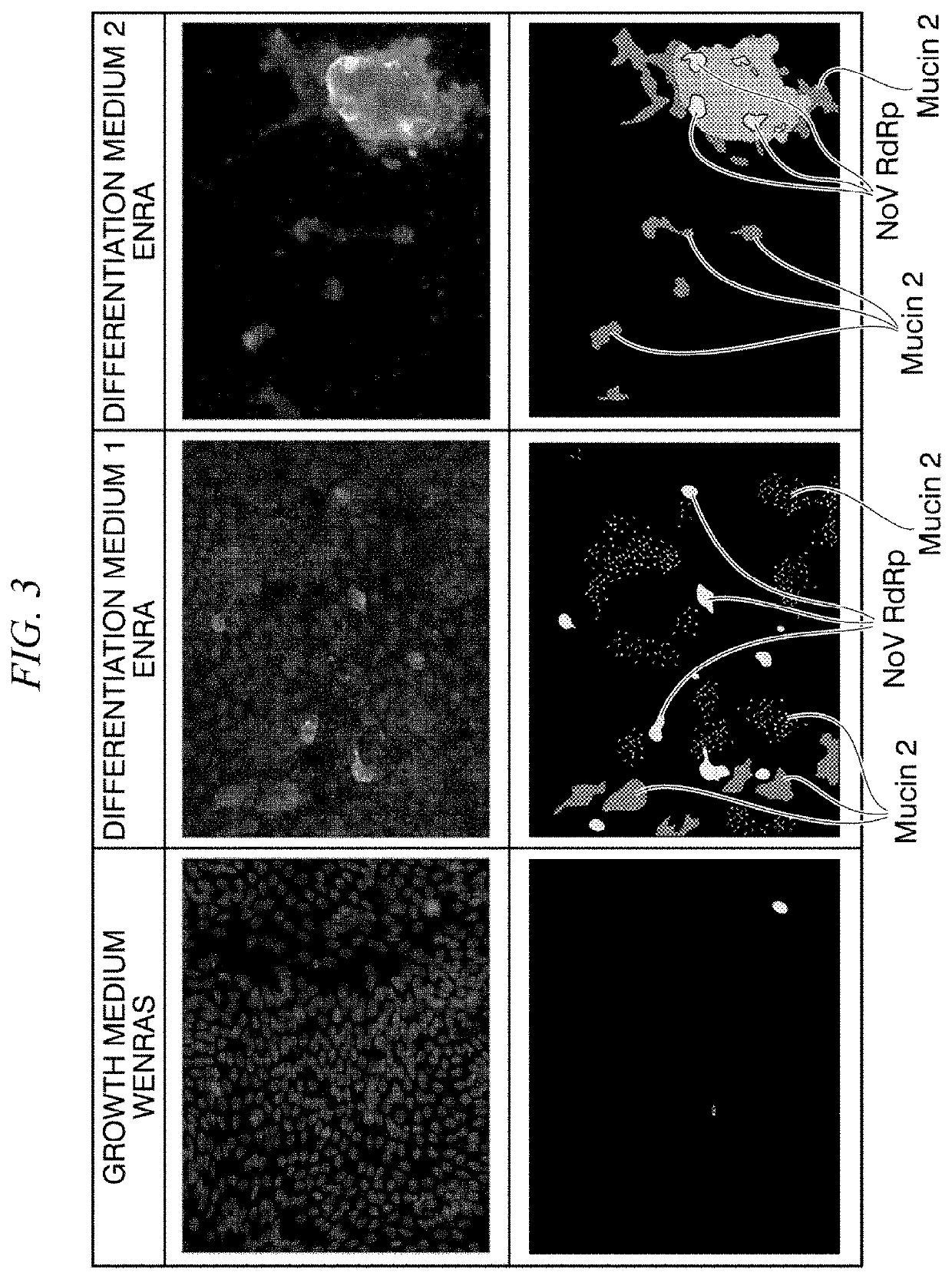2d organoid for infection and culture of human diarrhea virus, and use of said 2d organoid
a human diarrhea virus and organoid technology, applied in the field of 2d organoid, can solve the problems of not being able to use human virus, not being able to artificially produce human diarrhea virus in a large amount in vitro, and the cell culture system described in npl 1 cannot be applied to human virus research, etc., to achieve the effect of producing human diarrhea virus in a large amoun
- Summary
- Abstract
- Description
- Claims
- Application Information
AI Technical Summary
Benefits of technology
Problems solved by technology
Method used
Image
Examples
experimental example 1
[0189](Preparation of Cell Culture Medium)
[0190]First, human recombinant R-spongin 1 (manufactured by R&D systems) was added to a commercially available Advanced DMEM / F-12 medium (manufactured by Thermo Fisher SCIENTIFIC) such that a final concentration was 1 μg / mL. Noggin (manufactured by Peprotech) was added thereto such that a final concentration was 100 ng / mL. A83-01 (manufactured by Tocris) was added thereto such that a final concentration was 500 nM (hereinafter, referred to as “NRA medium”).
[0191]Further, Wnt3a at a final concentration of 300 ng / mL, IGF1 (manufactured by Biolegend) at a final concentration of 500 ng / mL, FGF2 (manufactured by Peprotech) at a final concentration of 50 ng / mL, EGF (manufactured by Thermo Fisher SCIENTIFIC) at a final concentration of 50 ng / mL, SB 202190 (manufactured by Sigma Aldrich) at a final concentration of 10 μM, and LY 411575 (manufactured by Sigma Aldrich) at a final concentration of 1 μM were added in the following combinations respectiv...
experimental example 2
[0204](Growth of Norovirus using Organoid)
[0205]>
[0206]Based on the ethics research plan approved by the Ethics Committee at the Medical School of Keio University, a part at least 5 cm or farther away from a gastrointestinal tract tumor was collected as a normal mucosa, from normal persons and patients with a gastrointestinal tract tumor, who provided informed consent. An epithelial cell was extracted with EDTA or liberase TH from the collected tissue and embedded in Matrigel (registered trademark).
[0207]Matrigel (registered trademark) containing the epithelial cell (hereinafter, referred to as “intestinal stem cell”) was seeded in a 48-well plate and cultured. Specifically, the procedure was as follows.
[0208]The cultured intestinal stem cells were seeded in a 48-well plate together with 25 μL of Matrigel (registered trademark) (manufactured by BD Bioscience). Each 100 μL of the WNRA+IGF1+FGF2 medium prepared in (1) was added to wells and incubated at 37° C. Medium exchange was perf...
experimental example 3
[0221](Examination of Extracellular Matrix)
[0222]The present inventors found that cell adhesion of the 2D organoid may not be stabilized in some cases.
[0223]Therefore, an extracellular matrix was examined. As the extracellular matrix, Collagen I and Matrigel (registered trademark) were used.
[0224]>
[0225]50 μL / well of 2.5% Matrigel (registered trademark) diluted with PBS(−) or 10% Collagen I was added to a 96-well plate, and incubated at 37° C. for 1 hour or longer. Thereafter, each well was washed three times with PBS(−) and used for the following cell culture. In addition, a 96-well plate without coating was used for comparison.
[0226]>
[0227]As in Experimental Example 2, an intestinal stem cell was cultured to obtain a 3D organoid.
[0228]>
[0229]The obtained organoid was cut using TrypLE (trademark) Express (manufactured by Thermo Fisher SCIENTIFIC) to make a single cell. The single cell was washed with the ENRA medium (differentiation medium 1), and then suspended in the ENRA medium ...
PUM
 Login to View More
Login to View More Abstract
Description
Claims
Application Information
 Login to View More
Login to View More - R&D
- Intellectual Property
- Life Sciences
- Materials
- Tech Scout
- Unparalleled Data Quality
- Higher Quality Content
- 60% Fewer Hallucinations
Browse by: Latest US Patents, China's latest patents, Technical Efficacy Thesaurus, Application Domain, Technology Topic, Popular Technical Reports.
© 2025 PatSnap. All rights reserved.Legal|Privacy policy|Modern Slavery Act Transparency Statement|Sitemap|About US| Contact US: help@patsnap.com



